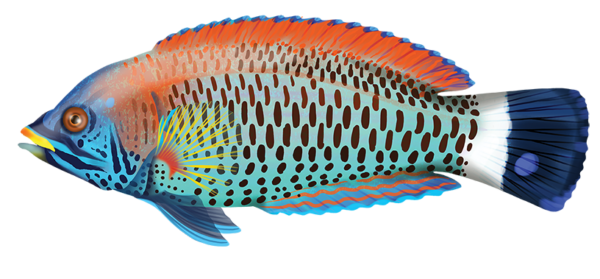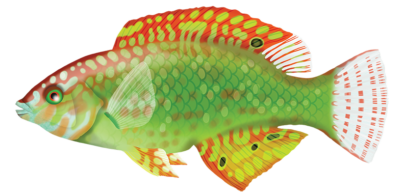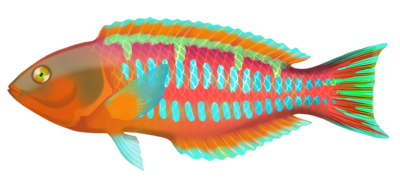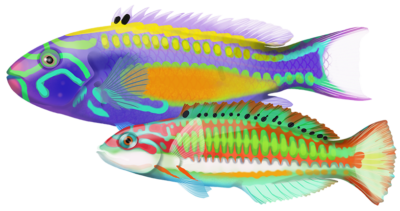Quick Facts
Distribution
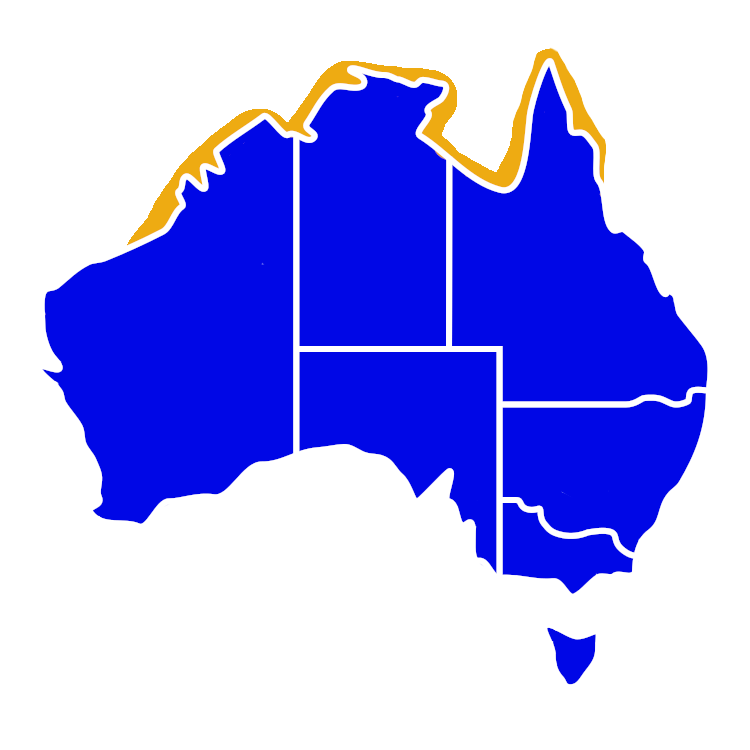
Interesting Info
- The Chiseltooth Wrasse is commonly found in the northern parts of Australia, particularly in the waters around the Northern Territory.
- The species is known for its distinctive coloration, which includes a bright blue head and a greenish-brown body.
- The species is a carnivorous fish, feeding primarily on small fish, crustaceans, and other invertebrates.
- The Chiseltooth Wrasse is a solitary species, often seen swimming alone or in pairs. The species is known for its aggressive behaviour, particularly towards other wrasses and fish that are similar in size or appearance.
- During the breeding season, which typically occurs in the summer months, male Chiseltooth Wrasses become more brightly coloured and engage in aggressive displays to attract mates.
- Like many other wrasses, the Chiseltooth Wrasse is hermaphroditic, meaning that it has both male and female reproductive organs.
- Juvenile Chiseltooth Wrasses often form large schools for protection and socialization, but as they grow older, they become more solitary.
- The estimated lifespan is between 10 – 15 years in the wild.
Species Interaction
Recreational Fishing, Aquarium, Snorkeling & Diving
Chiseltooth Wrasse are not a targeted species for fishing and are often caught as bycatch, and are released. Chiseltooth Wrasse can be challenging to keep in captivity, and only experienced aquarium keepers should attempt to keep this species as they are very aggressive to other species and need lots of care. They can be a fascinating fish to observe while snorkeling or diving as they have striking colours.
Scientific Classification
Kingdom: Animalia
Phylum: Chordata
Class: Actinopterygii
Order: Perciformes
Family: Labridae
Genus: Pseudodax
Species: Pseudodax Moluccanus
Conservation Status
The conservation status of the Chiseltooth Wrasse in Australia is not formally assessed. However, the species is not currently considered to be threatened, endangered, or vulnerable.
How to catch
Chiseltooth Wrasse
Catch Difficulty: Easy
Tackle: Running Sinker Rig
Bait: Fresh cut flesh baits, Pilchards, Prawns, Squid, Worms
Technique: Keep bait on the bottom, Keep bait close to the reef/structure
Popularity: Not targeted
Chiseltooth Wrasse
As Aquarium Fish
Care Level: Difficult
Temperament: Very Aggressive
Diet: Carnivore
Reef Compatible: Yes
Minimum Tank Size: 180 gallons
Recreational Viewing
- Snorkeling & Scuba
Finding: Easy
Temperament: Aggressive
Location: Inner Reef, Outer Reef, Lagoon
Danger: None


